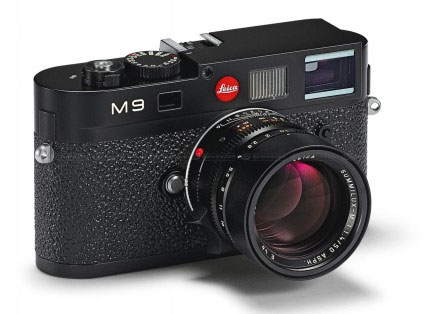 Today, German camera manufacturer Leica unveiled their newest M-series, the M9 digital rangefinder, and the new Leica X1. The Kodak Company, long-time supporter and supplier of Leica’s image sensors, developed a new CCD sensor specifically for the M9, amplifying the hype for the camera’s arrival.
Today, German camera manufacturer Leica unveiled their newest M-series, the M9 digital rangefinder, and the new Leica X1. The Kodak Company, long-time supporter and supplier of Leica’s image sensors, developed a new CCD sensor specifically for the M9, amplifying the hype for the camera’s arrival.
The Kodak KAF-18500 provides a new level of camera capabilities—providing full frame image capture and a much improved image quality compared to the sensors in the M8. The new CCD sensor has been customized to work with Leica’s M-series removable lenses and mount, which has been backwards compatible with all the lenses since the original model was released in 1945. Although the M9 offers the same compact size as its predecessor the M8, the advanced image sensor beefs its resolution power and is referred to by Leica as “the world’s smallest full-frame camera system.”
“We are honored that Leica has again chosen Kodak to supply image sensors for their latest camera – the new M9,” said Chris McNiffe, General Manager of Kodak’s Image Sensor Solutions group, in a statement today. “This new sensor is the latest example of Kodak’s continued commitment to support a broad range of imaging markets with high-performance image sensors that leverage Kodak’s most advanced CCD technology.”
Also disclosed was the new X1, although seemingly overshadowed by the fully equipped M9, Leica claims this compact digital camera holds its own by providing profound image quality from its CMOS sensor. The new X1, while aesthetically similar to the M9 design, was intended as a cross between the M-series and compact cameras uses a smaller APS-C size 12-megapixel sensor that the company bills as the largest ever in a compact. The X1 also offers autofocus, a popup flash, and a lens with 24mm fixed focal length. The Leica X1 will be available in January priced at $2000, while the M9 is currently available and priced at $7000.
Editors' Recommendations
- 5 reasons I love the Leica M11 camera and 5 reasons I don’t
- Vivo shakes things up with new gimbal-equipped X50 Pro camera phone
- Lust after Leica’s new luxury Summilux-M 90mm f/1.5 and special-edition M10-P
- Leica SL2 vs Panasonic Lumix S1R: Two L-mount leaders with one big difference
- Leicas are never cheap, but the M-E sacrifices little and costs half as much


